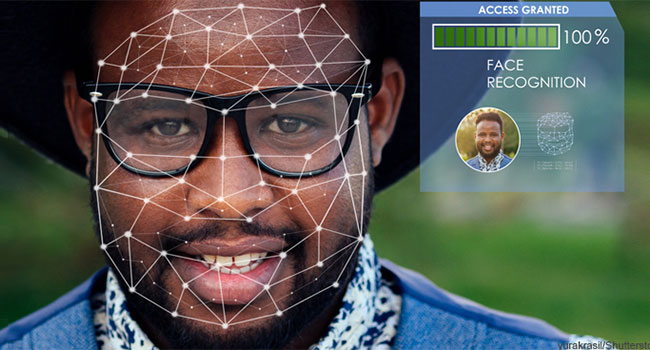
AF Looks to Facial Recognition to Secure Facilities
- By Stephanie Kanowitz
- Aug 27, 2020
The Air Force’s AFWERX innovation arm is investing in real-time facial recognition to secure base perimeters and enhance situational awareness for Air Force security staff.
Announced earlier this month, AFWERX awarded two Phase II Small Business Innovation Research (SBIR) contracts to SAFR from RealNetworks to adapt its SAFR facial-recognition platform for use by a Security Forces Squadron and an intelligence, surveillance and reconnaissance (ISR) wing
The central challenge for both projects is using a single platform that can analyze video from multiple devices -- drones, body-worn cameras and fixed surveillance cameras -- and determine that a facial image belongs to a live person, as opposed to a photograph or video of someone.
One way that’s done now is through challenge-response authentication in which a computer randomly selects a challenge that someone must do such as blink or look left. That’s not necessarily secure, though, said Eric Hess, senior director of product management for SAFR. Other approaches include using specialized hardware such as a 3D camera that is task-specific or infrared sensors to determine if someone emits heat, but those require more hardware and complexity.
“Really what everyone would like is to be able to take an RGB video stream from any camera -- whether it be a webcam, whether it be your surveillance camera, whether it be a camera on your iPhone or Android tablet -- and determine whether or not the image that you’re seeing is truly one that belongs to a human being,” Hess said. “That’s the holy grail.”
To do that, a server pulls all the video streams back, processes them, finds faces and extracts thumbnails to kick off the facial-recognition task.
As part of the SBIR award, SAFR is also working to use the processing power in the camera to search for faces. The camera, which is connected to the cloud, processes the video, detects faces, extracts those thumbnails and submits them to a cloud-based solution for matching. It returns names, dates, times, locations and source of the video.
For example, Mountain Home Air Force Base in Idaho is one of the few domestic military bases that have been approved to fly drones, which it can use to control the base’s perimeter. If security forces see someone close to the fence who shouldn’t be, they can capture that person’s face from a drone camera and enroll it in the database. If that face shows up again – if that person comes to the main gate, for example -- the body-worn camera worn by the entry officer there could identify the face as belonging to someone who was seen near the perimeter.
The coronavirus inspired the second access-management project. The ISR wing wanted reduce the need for officials to touch surfaces before entering secure areas. “Today they use a PIN and a key card” for two-factor authentication, Hess said, but facial recognition would replace the PIN, removing the need to touch a keypad and making the key card and face the dual authenticators.
What’s more, the technology can still identify someone who is wearing a face mask, increasing both security and compliance with current health regulations. It can “recognize the person’s identity, confirm they have access rights to that specific doorway and then also confirm that they’re wearing a mask before you would unlock the door,” Hess said. “That way, you’ve authenticated them, it’s who they are, they have the right rights, and they’re wearing the face mask for health safety policy reasons.”
Under the contracts’ terms, both projects must be completed in 10 to 11 months. Once the platform is adapted for the Air Force, the SBIR program allows for any other federal agency to award a sole-source contract for technology developed under the program.